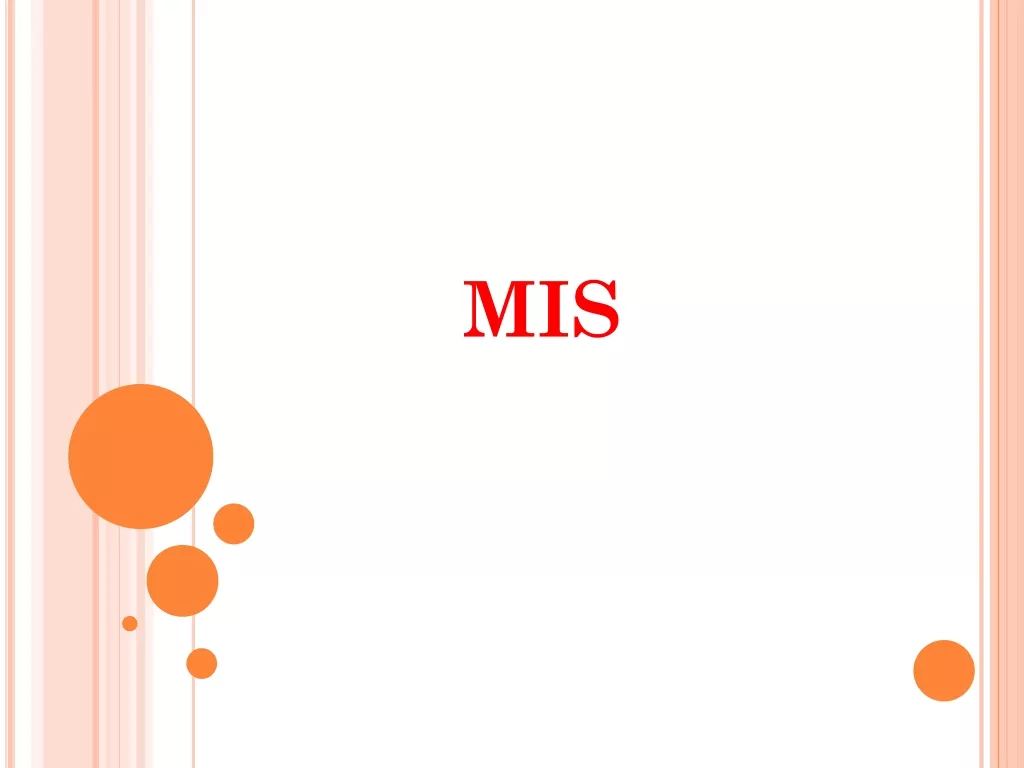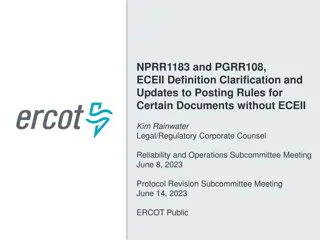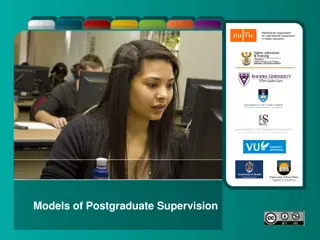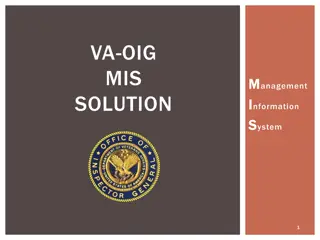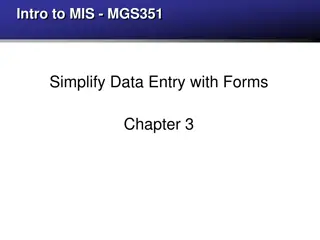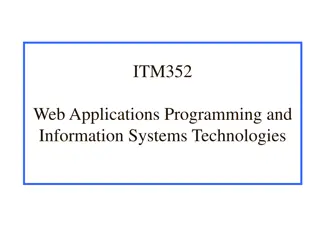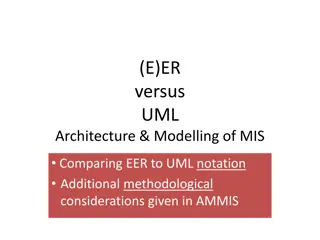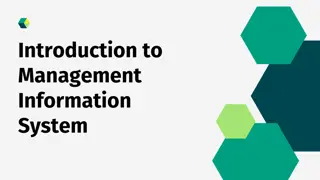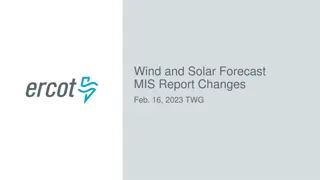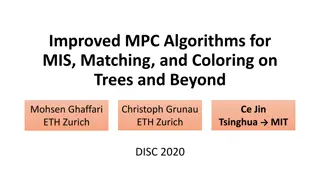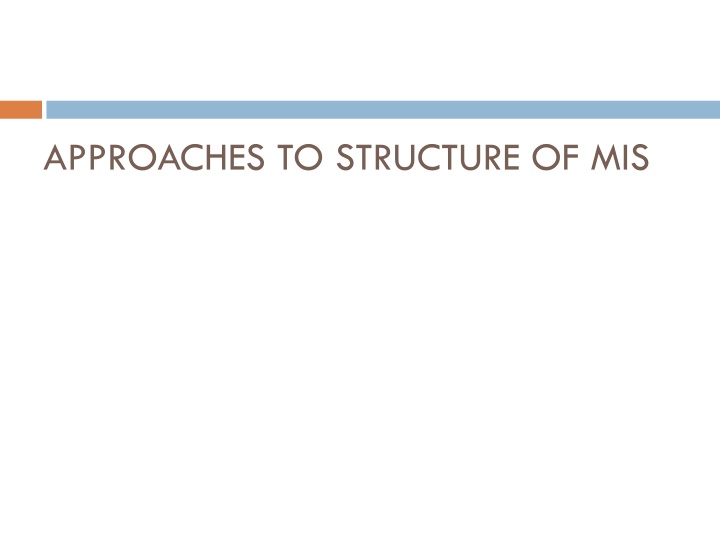
Approaches to Structure of Management Information Systems
Explore the main components of the approach to structuring Management Information Systems (MIS), including operational elements, MIS subsystems, MIS and decision-making, and information system processing functions. Learn about the hardware, software, functional subsystems, decision types, and transaction processing involved in structuring MIS.
Download Presentation

Please find below an Image/Link to download the presentation.
The content on the website is provided AS IS for your information and personal use only. It may not be sold, licensed, or shared on other websites without obtaining consent from the author. If you encounter any issues during the download, it is possible that the publisher has removed the file from their server.
You are allowed to download the files provided on this website for personal or commercial use, subject to the condition that they are used lawfully. All files are the property of their respective owners.
The content on the website is provided AS IS for your information and personal use only. It may not be sold, licensed, or shared on other websites without obtaining consent from the author.
E N D
Presentation Transcript
COMPONENTS Main components of this approach are as follows: Operational elements MIS subsystems MIS and decision support Information system processing functions MIS structure based on management activity
OPERATIONAL ELEMENTS ELEMENT DECRIPTION hardware Multiple computer system: Mainframes, minicomputers, personal computers Computer system components are: central processor, memory hierarchy input and output devices Communications: local area networks, metropolitan area network, and wide area networks software System software and application software database Organized collections of data used by application software personnel Professional cadre of computer specialists: end users in certain aspects of their work procedures Specifications for the use and operation of compurtized information systems collected in user mannuals.
MIS SUBSYSTEMS Functional subsystems Some typical reports Marketing Marketing analysis and sales forecasting report sale planning report, customer and sales analysis report Production Production planning reports, quality control reports Personnel personnel information reports, training and leave records Finance and accounting General accounting reports, payroll accounting reports, bonus and IT reports , cost analysis reports.
MIS AND DECISION MAKINNG Structured, programmable decisions:-when a decision can be programmed, an organization can prepare decision rule or procedure. This can be expressed as a steps to follow, a flowchart, a decision table or a formula. Unstructured, non programmable decisions:-In unstructured decision has no pre established decision procedure because the decision process is not understood well or it is too unchangeable.
INFORMATION SYSTEM PROCESSING FUNCTIONS To process transactions:- FILES TRANSACTI ON TRANSACTION DOCUMENT PROCESS TRANSACTIONS
To update a master file: MASTE R FILES TRANS ACTIO N DATA UPDATE D MASTER FILES MASTE R FILE CHARG ES UPDATE MASTER FILES
To produce reports:- PREPARE REPORTS FILES REPORT
To process enquiries:- INQUIRY RESPONSE HANDLE ENQIRY INQUIRY INQUIRY RESPONSE FILES
To process interactive support application:- DECISION MAKER DECISION MODEL PROCESSING MODEL INPUT AND OUTPUT
MIS STRUCTURE BASED ON MANAGEMENT ACTIVITY Strategic management Management control Operational management Provide information to different levels of management for discharging their function more effectively.
Information system for operational management The responsibility of operational level management is to supervise operational activities. Operational control makes use of pre established procedure and decision rules. They supervise the day to day activities. Information of this level mainly comes from internal data generated from tranctions.
Tactical management Management control information is required by managers of departments, profit centers etc to measure performance, decide control actions, formulate new decision rules to be applied by operational personnel.
Strategic management The purpose of strategic planning is to formulate strategies to achieve organization goals. They make long term plans. They depend upon external data such as competitors policy, market condition, government policies etc. or decision making. Hence decisions at this level are unstructured and non programmed.

